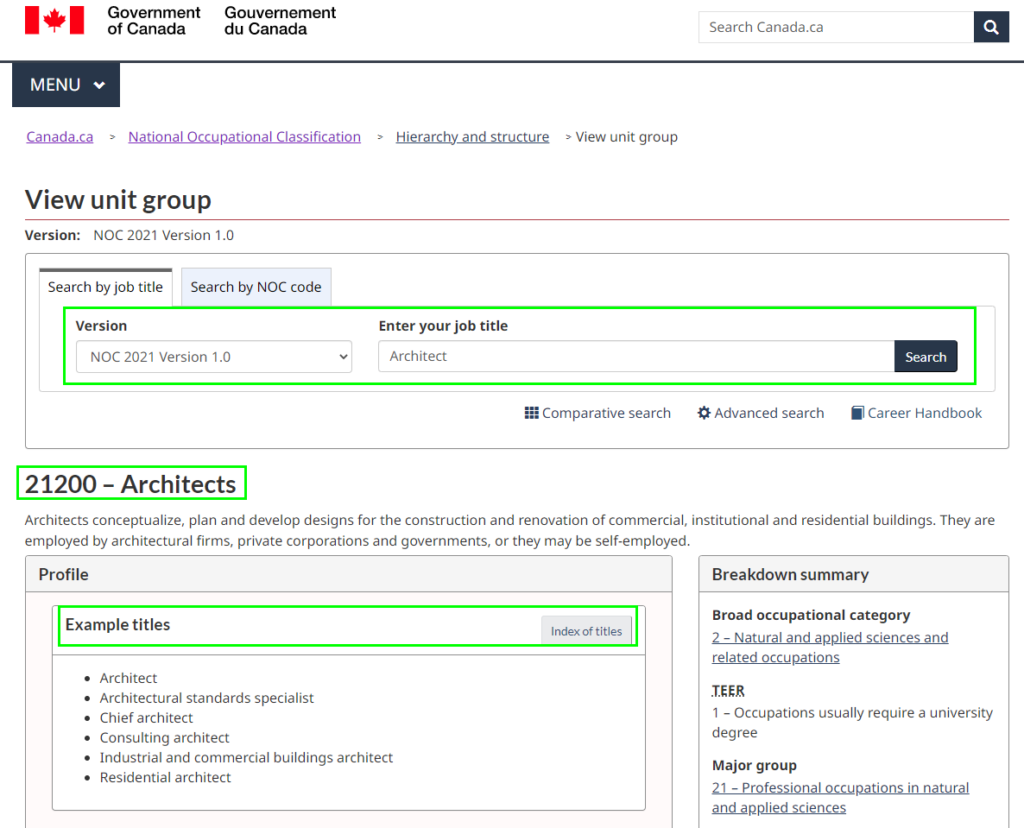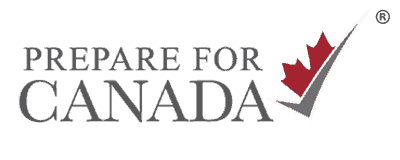
Architect jobs in Canada are held in high esteem. As an internationally trained professional, continuing your architectural career is an important part of your success when you arrive in Canada. It’s vital to research employment requirements for architect jobs in Canada before you arrive to help you restart your career. At a minimum, you want to ensure that your international credentials will be recognized in Canada. Otherwise, even if your skills, experience, and expertise match the job description, you may have to take courses or write exams to validate your credentials. Plus, the more you do to prepare yourself can have a positive impact on your architect salary in Canada.
Prepare yourself to continue your architectural career in Canada with this helpful overview.
Contents:
- How to Immigrate to Canada as an Architect
- What to Expect When Pursuing an Architect Career in Canada
- Requirements to Become an Architect in Canada
- Upgrading Your Skills to Meet Architect Job Requirements
- Bridging Programs for Architect Careers in Canada
- Architect Schools in Canada
- Architect Associations in Canada
- Immigrant Networks for Architects in Canada
- How Much Do Architects Make in Canada?
- Best Provinces to Work in Canada as an Architect Based on Salary & Lifestyle
- Pursuing an Architect Career in Canada
- How to Find Your First Architect Job in Canada
- Interview Techniques for Architect Jobs in Canada
How to Immigrate to Canada as an Architect
You need to take the right steps and follow to proper channels to immigrate to Canada. Researching professional requirements can help you understand the process you must follow to work in Canada.
Before You Move to Canada to Pursue an Architect Career
There are steps that you can take before you immigrate to improve your chances of practicing architecture in Canada:
- Attend the free webinar What to Know About the Canadian Job Market to learn more about living and working in Canada.
- Research how your international qualifications may be viewed in Canada and get a general sense of the Canadian labour market.
- Contact the Canadian Architectural Certification Board (CACB) and the provincial or territorial regulatory body in the province where you intend to settle and work.
- Find out the procedure to follow, costs, and time required to obtain a permit.
- Ask what steps in the licensing process you can take before and after you immigrate. CACB will assess your international education against Canadian standards. Any schools that you attended must send the documents directly to the CACB.
- Find out what other documents you need to bring for employment purposes, or to continue your education.
- Verify what documents need to be translated. You may need to use a professional translation service in Canada.
- Assess your language skills by taking an online self-assessment on the Centre for Canadian Language Benchmarks website.
- Enroll in language classes while you are in your home country and continue them after you move to Canada. To practice the profession, you need to have advanced English or French (depending on your destination province) language competency.
- Gather and organize your official education, work, and identity documents while still in your home country.
- Learn how the architect profession is practiced in Canada and become familiar with the procedures, laws, and legislation that govern architects in the province where you will settle.
- Know common titles that employers use for architect jobs in Canada.
- Research architect salaries and benefits based on your job title and experience.
What to Expect When Pursuing an Architect Career in Canada
Advertisement:
By law, you can only practice as an architect in Canada, or use the title “architect,” if you have been licensed as a full member from the provincial or territorial regulatory body where you intend to work. However, it is not necessary to be registered or licensed to work in an architectural firm if you are working under the direction of an architect. So, there are different paths you can take to work as an architect. Being licensed will make a significant difference in your architect’s salary.
Watch now to get architecture licensing tips from BCCA-Integrating Newcomers:
Employment Outlook for Architect Jobs in Canada
Understanding current labour market conditions is required when exploring your architectural career options in Canada. You need to have a sense of the size of the industry and where the best opportunities exist within the country.
According to the Government of Canada’s Job Bank, more than 18,000 people work as architects in Canada. As a result of job vacancies and employment growth in this industry, there is an anticipated shortage of professionals. Between the period of 2022-2031, there is an expected shortage of 5,400 positions. New graduates and immigrants will be relied upon to fill these architect jobs. This is a great opportunity for newcomers with international architecture experience. Architect salaries are competitive, and you will have lots of opportunities to find work across the country.
Start Your Research with the NOC Code for Architect Jobs in Canada
The National Occupational Classification (NOC) is Canada’s reference for occupations. It provides job descriptions, occupational statistics, and labour market information. Check out NOC 21200 for a full list of job titles for architects.
Advertisement:

The Canada Job Bank is another useful tool for learning more about your profession in Canada.
Related Post: Construction Job Requirements in Canada
Requirements to Become an Architect in Canada

Finding a job and starting an architect career in Canada may be different than in your home country. So you may need help to find job vacancies, update your resume, write cover letters, prepare for interviews, and understand what Canadian employers look for.
The employment requirements for architects in Canada include:
- A bachelor’s degree from an accredited school of architecture (or completion of the syllabus of studies from the Royal Architectural Institute of Canada)
- A three-year internship under the supervision of a registered architect
- Registration examination
- Registration with the provincial or territorial association of architects in the region of work
- A Master’s degree or a LEED certification may be required by some employers.
Credential Recognition to Meet Architect Job Requirements in Canada
Even if you have international experience, you need to be licensed in Canada to continue your architectural career. And, part of this process is known as credential recognition. The first step is to contact the CACB to learn how your educational qualifications will be assessed. Once you submit the complete application, the assessment take about three months. After that, the appropriate provincial or territorial architect regulatory authority takes care of the next steps in the licensure process: internship and examination.
You must also:
- Find a mentor and complete the Canadian Experience Record Book.
- Complete a specified number of hours of work experience in specific areas to meet the experience requirement of the licensure process.
- Submit your previous work experience in architecture in your country of origin for consideration.
Consider pursuing the Broadly Experienced Foreign Architects Program option to get licensed in Canada. Developed by the eleven Canadian Architectural Licensing Authorities, this bilingual program streamlines the process for foreign-trained architects to become certified for licensure/registration in Canada.
Credentials Assessment Services
There are several credential assessment services in Canada including:
World Education Services (WES)
Comparative Education Service: University of Toronto School of Continuing Studies
International Qualifications Assessment Service – Alberta (IQAS)
The International Credential Evaluation Service (ICES)
To find more organizations and agencies providing credential evaluation, assessment, and qualification recognition services click here.
Upgrading Your Skills to Meet Architect Job Requirements

Canadian employers place a high value on soft skills, which are personal attributes that enhance your interactions, job performance, and career prospects. Unlike your technical skills, you can apply your soft skills broadly.
Soft skills, such as leadership, good communication, abstraction, strategic thinking, and negotiation skills are important for architects. As an architect, you must have technical experience, collaboration skills to work with multiple groups, and the ability to lead groups.
If your technical skills get you an interview, most probably it is your soft skills that will get you the job and enable you to keep it afterward.
Though not a must, upgrading your education and skills through a bridging program or other educational courses and workshops may be an important part of your journey to becoming a successful architect in Canada. It will also help you increase your architect’s salary.
Education Options for Architects
Many immigrants take further education after coming to Canada. If you plan to enroll in a college or university program to upgrade your skills, contact the school that you plan to attend and find out what steps to take. As well, check to see if they want you to use a specific credential assessment agency. Using unrecognized agencies can end up costing you more money and fees.
Make sure to highlight your international education and skills. Build on your existing knowledge and skills and explore university and college options thoroughly before deciding if you need to continue your education. You might be able to get advanced standing, transfer some of your credits and benefit from prior learning assessment options to gain credit or course exemptions. This will allow you to complete your program more quickly, without wasting money and repeating the education you already have.
Some even want to change or enhance their architect careers with a Ph.D. or MBA. Read more: Higher Education Offers Benefits to Newcomers.
Language Training for Architects in Canada
Having strong skills in one or both of Canada’s official languages – English or French – is extremely important for your future in Canada. Whether you choose to focus on learning or improving English or French will depend on which of the two languages most people speak in the area where you intend to live.
You may be eligible for Language Instruction for Newcomers to Canada (LINC) program. Otherwise, you can find other free or affordable classes in English as a Second Language (ESL) or French as a Second Language (FSL) classes through school boards or settlement agencies.
There are even language courses to teach you professional terminologies, such as Enhanced Language Training (ELT) and Occupation Specific Language Training (OSLT) in Ontario. And, if you already speak one of Canada’s two official languages at a high level, learning the other one is a good option, as it may offer you better employment opportunities.
Bridging Programs for Architect Careers in Canada
Bridging programs are a good way to transition from your international experience and training to the Canadian workplace. Many colleges, universities, and immigrant-serving agencies offer bridging programs or workshops. You may be eligible for one. Do some research to find a program that’s suitable for you.
Alberta
Athabasca University
Post-Baccalaureate Diploma in Architecture (PBDA)
If you wish to take courses required for CACB certification, you may register as a non-program student within the PBDA program.
Ontario
JVS Toronto
Bridge Training for Immigrant Professionals Leveraging Architectural Knowledge for New Opportunities (I-PLAN)
This 14-week bridge training program helps internationally educated professionals find employment in the architectural field. Program components include architectural academic training, Enhanced Language Training (ELT), Canadian Workplace Essentials (CWE), employment services, mentoring, and internship placements.
Humber College
Engineering Software Skills Enhancement Bridging Program
This 15-week bridging program is for internationally trained professionals with education and experience in engineering, architecture, or related professions. Participants of the program get training that helps them gain advanced concepts and skills in integrated solutions for the energy efficiency, green building, and renewable energy sector: The program includes Occupation Specific Language Training (OSLT), Canadian workplace culture, career planning, job search, and mentorship opportunities.
Architect Schools in Canada
There are over 30 schools offering architecture programs at the college and university levels across Canada. 12 universities offer degree programs including:
There are also many colleges across the country that offer programs in:
- Architectural technology
- Architectural history
- Industrial design
- Interior design
- Urban planning
- Landscape architecture.
Architect Associations in Canada

The architecture industry in Canada is supported by professional associations. The following associations can provide information about licensure and certification and offer professional development, education, and networking opportunities.
National Architecture Associations
The Royal Architectural Institute of Canada (RAIC) is the national association and the voice for architecture and its practice in Canada. It represents over 4000 architects.
Canadian Architectural Certification Board (CACB)
Canadian Society of Landscape Architects (CSLA)
Provincial Architect Regulatory Bodies
Alberta
Alberta Association of Architects (AAA)
British Columbia
Architectural Institute of British Columbia (AIBC)
Manitoba
Manitoba Association of Architects (MAA)
New Brunswick
Architects’ Association of New Brunswick (AANB)
Newfoundland and Labrador
Newfoundland Association of Architects (NAA)
Northwest Territories
Northwest Territories Association of Architects
Nova Scotia
Nova Scotia Association of Architects (NSAA)
Ontario
Ontario Association of Architects (OAA)
Prince Edward Island
Architects Association of Prince Edward Island (AAPEI)
Quebec
Ordre des architectes du Québec (OAQ)
Saskatchewan
Saskatchewan Association of Architects (SAA)
Immigrant Networks for Architects in Canada
Professional immigrant networks are organized, volunteer-run networks created by and for immigrant professionals that seek to:
- create a forum to contribute to and enrich their respective communities
- provide opportunities for their members to find meaningful employment and achieve their professional goals.
Activities include networking events, mentoring, professional development, and other events.
Here are some immigrant networks to research across Canada:
Nova Scotia
isans: Immigrant Services of Nova Scotia: helps newcomer professionals with their full economic and social integration in the province of Nova Scotia.
Ontario
Professional Immigrant Networks (TRIEC).
How Much Do Architects Make in Canada?

Architect salaries can range between $20 and $60 per hour. For a full-time position, this is an annual architect salary of $41,600 to $124,800. The average hourly rate is $36 per hour, $74,880 annually. How much you get paid can depend on a variety of factors. The most important factors that affect your architect’s salary are your level of experience, the type of work you do, and your location.
The provinces with the highest average architect salary are Newfoundland and Labrador, British Columbia, and Ontario. The lowest average salary is in Quebec.
Architect Salary in Canada
Architect salaries vary across Canada. Here are the most recent salary ranges for architects in Canada:
| Province | Low ($/hour) | Median ($/hour) | High ($/hour) |
|---|---|---|---|
| Alberta | 25.00 | 36.36 | 60.16 |
| British Columbia | 30.00 | 39.38 | 60.00 |
| Manitoba | 20.19 | 34.13 | 55.00 |
| New Brunswick | 24.84 | 34.32 | 50.04 |
| Newfoundland and Labrador | 25.44 | 41.27 | 60.37 |
| Northwest Territories | N/A | N/A | N/A |
| Nova Scotia | 23.06 | 32.74 | 49.63 |
| Nunavut | N/A | N/A | N/A |
| Ontario | 24.00 | 37.18 | 60.10 |
| Prince Edward Island | N/A | N/A | N/A |
| Quebec | 21.50 | 31.84 | 50.13 |
| Saskatchewan | N/A | N/A | N/A |
| Yukon | N/A | N/A | N/A |
Best Provinces to Work in Canada as an Architect Based on Salary & Lifestyle
Generally, architecture job prospects are positive. The number of architects is expected to increase slightly over the next few years due to the anticipated growth in construction and the demand for architectural services.
Though most Canadian cities offer employment opportunities in the architectural sector, you may find more opportunities in the fast-growing provinces of Saskatchewan and Alberta. When looking for jobs, broaden your geographic area to include smaller cities and towns close to your target city. For example, if you intend to work in Toronto, you might find a job opportunity in nearby Hamilton, which is less than an hour’s drive from there.
Before deciding where you want to settle in Canada, research and find out where there is a higher demand for architects to make your job search easier.
Pursuing an Architect Career in Canada
Major Employers for Architect Jobs in Canada
In Canada, architects are employed by architectural firms, private corporations, and governments. Or they may also be self-employed.
New job openings in the sector will come mainly from opportunities that arise when architects retire or change jobs and, to a lesser degree, from employment increases. Keep in mind that the type of company you work for can affect your architect’s salary and career path.
You can visit Canada’s Best Diversity Employers to check for immigrant-friendly organizations that may be of interest to you. This special designation recognizes top employers for exceptional workplace diversity and inclusion programs.
Some of the top architect firms in Canada include:
- ACDF Architecture
- MGA – Michael Green Architecture
- Diamond Schmitt
- Atelier RZLBD
- Hariri Pontarini Architects.
How to Find Your First Architect Job in Canada

Job opportunities for architects continue to remain positive, however, the Canadian job market is competitive. So, you need to prepare and understand job search steps to gain employment. It’s vital to research the architectural profession before you arrive and look for jobs in the region where you plan to settle. Here are some tips to search for architect jobs in Canada:
- Broaden your search and include alternative architect careers such as design and construction.
- Seek out a mentor in the architectural sector – for example, a retired architect – who would give you valuable insights and advice and introduce you to their professional network.
- Join business-related job-finding or networking clubs through immigrant-serving agencies.
- Attend industry job fairs and regularly check online job boards.
- Check out college and university job boards as well as association job boards.
Use Immigrant Settlement Agencies
Most settlement agencies offer help to find jobs, update your resume, write cover letters, and prepare for job interviews.
Read more about Services in Canada to Help Newcomers Settle.
Resume Writing for Architect Jobs in Canada
Job hunting for architects involves more than just writing a resume. You often have to showcase your professional portfolio and work samples.
When writing your architect resume, be sure to highlight your relevant educational qualifications and specialization. There are many fields in architecture such as landscape architecture, infrastructure architecture, system architecture, etc. and each of the different types has its own specifications in terms of job responsibilities and educational qualifications. Therefore, when writing your resume, be sure to tailor it to the job profile of the position that you apply for.
Find out more about writing your resume: Types of Resumes that are Common in Canada.
Consider these tips when looking for architect jobs in Canada so that you can easily create an impressive resume package.
Targeted and Personalized
You must leverage your social and professional networks. In your cover letter, be sure to mention any contacts you have within the organization or the names of professors or consultants who have referred you.
Objective
In this part, avoid writing that your goal is to “gain meaningful employment in the field of architecture”. You might as well simply say that your goal is to get a job. Instead, consider writing something like your goal is to “advance beyond your current position and earn the respect of your peers”. See how much more information someone can infer about you just by this minor change?
Your Role in Projects
Work experience in terms of jobs or individual projects plays a crucial role when applying for a position.
Mention the complete list of your job history specifying relevant responsibilities and activities performed. Describe all the projects you have handled individually or under supervision.
Be specific about your project involvements and your role as a team member. Give a brief description of the project, including name/location/scale, and deliverables you produced or to which you contributed.
If you wish to add more power to your resume, you can add photographs of your projects. This will help potential employers review your resume more effectively.
Resume Design: Simple and Clean
Be aware of font size and spacing, making sure the text is easily legible. Take cues from your favourite design publications or branding consultancy websites. They are great resources for examples of clear and concise messaging.
Accomplishments
List all of your relevant accomplishments, award, honours, and milestones to add credibility to your resume.
Error-Free
Lastly, architecture is an aesthetic profession in which attention is paid to the grand gesture, as well as to the smallest of details. So, be rigorous in your editing and make sure to proofread more than once for grammar and spelling mistakes.
Related Posts:
Cover Letter Format that Canadian Employers Notice
Networking Tips for Architects
Networking is a vital activity to get job leads, advice, and information about a particular firm, and meet others to expand your network. As many job vacancies are not advertised, you must make connections with practicing architects and others in your field.
Good places to network include conferences, association events, and industry get-togethers to meet people, build relationships, and share information.
LinkedIn is another important tool for networking. It is great to reconnect with your former colleagues and employers, search for companies and jobs, and get introductions and recommendations.
You can also join some related professional groups. But remember, that you have to allow time to cultivate and grow the ties you establish through networking. Nothing will happen overnight and you need to be patient. However, finding opportunities through your network can lead to a quicker hire and even a higher starting architect salary.
Information Interviews for Architects
An informational interview is a brief (20–30-minute) meeting that you schedule with a person who is currently working in your target field and geographic location to learn more about that particular sector. You should not try to get a job during an informational interview but rather find out whether or not a particular position or industry might be a good fit for your interests and your personality.
An informational interview with a contact from your network can be a great source of architect career information. In addition to gathering information about the industry, you’ll benefit from first-hand experiences from a professional working in the field.
Interview Techniques for Architect Jobs in Canada
Whether you are looking for your first architect job in Canada, moving from your first job to your second, or seeking architect career advancement, you will need to hone your interviewing skills.
Here are a few questions that you can expect to hear that could make or break your interview. Preparing for them well may set you apart from the other candidates.
Tell Me About Yourself.
“Oh, where to begin?!” Hopefully, this isn’t your immediate thought! The key to answering this question is to be succinct; no more than a minute at most. A helpful guideline is to summarize your education and work experience and how it relates to the job you are interviewing for.
Interviewers will sometimes ask this question to make you feel at ease. However, it’s important to simply stick to the basics and move to the next question.
What Do You Know About the Company?
Before you attend the interview, you should have a general idea of the work the company has done and the areas of expertise it specializes in. Speak of a few projects that are of interest to you. Your answers will show your strong understanding of the firm and where they are heading.
Why Do You Want to Work for Us?
A good response to this question (and most other questions) will depend on how well you have researched the company and prepared. You can answer in terms of what you feel the company may need from a new employee and how you may fit into that role.
You could say that the firm is working on certain typologies that you would like to be involved with or that the company is using principles or techniques that you have a great interest in. For example, if the firm is doing innovative work with community housing, you could emphasize your interest and experience in this area.
Why Should We Hire You?
This is where you highlight your skills and talk yourself up. Be confident when answering this question. Mention your consistent performance and highlight specific aspects of your resume. Say that your skills and interests, combined with your history of achieving results, make you a valuable candidate.
What Do You Value in a Job or Company?
Think of the various facets of growth that the company may offer. Talk about how you would like to advance within the firm based on your development and contributions.
What are Important Architecture Trends that Interest You?
Prepare to discuss trends that interest you in today’s architectural climate. You might consider technological advances, policy concerns, or how the field is responding to changing industry developments.

With a positive outlook for Architect jobs in Canada, now is the time to check out your options. Interested in learning more about working in Canada? Check out our Finding a Job in Canada resource page. We can help you achieve your architect career goals in Canada.

